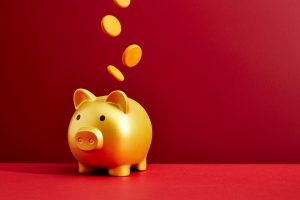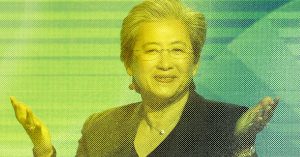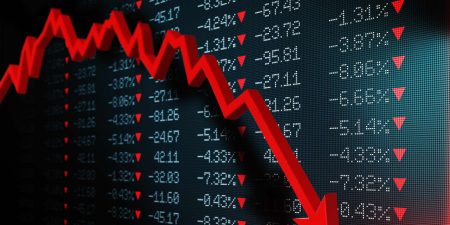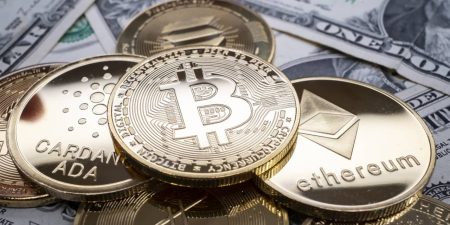Last year, most major Wall Street analysts and portfolio managers believed the U.S. economy would inevitably slide into recession in 2023 as the Federal Reserve raised interest rates. The only real question was how bad would it get?
But as investors enter the second half of 2023, signs of a weakening economy are still scarce. This is leading some to finally abandon the notion that a recession is right around the corner.
Goldman Sach’s chief economist, Jan Hatzius, recently dismissed the notion that a recession lies ahead, while a JP Morgan’s chief global market strategist, Marko Kolanovic, said the chances of a so-called “soft landing” for the U.S. economy are increasing.
As the will-it-or-won’t-it debate continues to rage on Wall Street, a team of economists at UBS Group
UBS,
decided to take a closer look at some of the factors that have helped support the U.S. economy.
Monetary policy isn’t that tight
Since last spring, the Federal Reserve has raised its policy interest rate, which in many ways determines the cost of money in the U.S., at the fastest clip since the early 1980s, according to UBS and others.
The upper bound of the Fed’s policy-rate target has climbed from 0.25% at the beginning of March 2022 to 5.25% recently. Many expect it will rise to 5.5% when the Fed meets next week.
At the same time, the Fed has shrunk its holdings of Treasurys and mortgage bonds by opting not to reinvest the principal as some of these bonds mature.
Despite this, the team at UBS still sees the Fed’s policy stance as relatively lenient.
“By many measures, monetary policy is only moderately restrictive, and it has been that way for less than six months—neither condition likely being sufficient to tip the economy into recession,” the UBS team said in a note.
Fiscal spending boosts growth
The Federal government’s spending helped to keep the economy afloat during the pandemic in 2020 and added trillions of dollars to the national debt, before pulling back in 2022.
But the fiscal contraction stopped last summer, and since then, spending has been rising on a year-over-year basis.
This has helped give the U.S. economy a boost, the UBS team said.
“Fiscal policy has implicitly turned expansionary again over the past six to nine months,” the UBS team said. “This means that fiscal policy has been more of a tailwind than a headwind for economic growth this year.”
Household debt is still manageable
Stimulus checks paid by the government to households , enhanced unemployment benefits, the Paycheck Protection Program and other pandemic-era programs helped American households build wealth during the pandemic.
As inflation has waned this year, many Americans are finding themselves with excess savings in reserve. Partly as result, the most recent University of Michigan’s Consumer Sentiment survey showed U.S. consumers are more optimistic than at any time in nearly two years.
Consumers and businesses didn’t borrow to excess
Business-cycle theory dictates that the seeds of a recession are sown during boom times.
In a typical economic cycle, excesses in the private sector tend to build up as the expansion goes on, especially during the strongest periods of growth. Both households and companies get overly optimistic about their prospects. This leads to excessive borrowing by households and overinvestment and over-hiring by businesses.
“While we do view the economy as being in late-cycle, there are not a lot of the usual excesses in the private sector. Ratios such as household debt to disposable income or corporate debt to GDP aren’t stretched,” the UBS team said.
One example is the ratio of household debt to GDP, which is frequently cited by economists as a gauge of the consumers’ health, which appears manageable.
Feared ‘credit crunch’ never arrived
Following the collapse of Silicon Valley Bank earlier this year, analysts across Wall Street warned that banks would curtail the amount of credit offered to customers. The looming credit crunch was expected to be severe and some postulated that it might aid the Fed’s inflation-fighting campaign.
That is not what happened. Instead, banks’ have continued to lend to even the least-creditworthy corporations, as the chart below — which measures issuance of so-called “junk bonds” — shows.
Tight labor market boosts growth
Demand for workers is arguably the most significant factor keeping the U.S. economy out of recessionary territory, the UBS team said.
More than 25 million jobs have been created since the U.S. economic recovery started in May 2020, according to U.S. government data and JOLTS (Job Openings and Labor Turnover Survey) data show there are still roughly 10 million job openings.
Postpandemic world is still a mystery
A once-in-a-century pandemic in 2020 and the ensuing responses from fiscal and monetary policy makers have pushed the U.S. economy into uncharted territory with few, if any, historical precedents.
Predicting what’s coming down the pike in economics and finance has always been extremely difficult, but in the brave new post-pandemic world, it is become practically impossible.
“The pandemic and now postpandemic economy is unlike anything that economists and investors have ever experienced. This has made it even more difficult to determine both how well the economy is performing and the likelihood of a recession,” the UBS team said.
Economy experiences a ‘rolling recession’
When COVID-19 first spread around the world, demand for goods soared, while demand for services like travel plummeted. Now, as the recovery progresses, the opposite is happening.
That is essentially what a rolling recession is: manufacturing can be in recession while the service sectors of the economy boom, and vice versa. Here’s how the team at UBS explained it.
“The first year of the economic recovery during the pandemic was often called K-shaped because of the diverging fortunes of goods sectors, which boomed, and services sectors, which were hit much harder and were far slower to recover.”
“The manufacturing sector was able to recover relatively quickly because of goods demand. Once spending patterns started to revert to normal in 2022 and the demand for goods fell, manufacturing output soon followed.”
“As a result, manufacturing output has contracted since last fall and has effectively been in a recession. Now that spending on goods, especially autos, has been rising again in 2023, the manufacturing sector should be able to avoid a deep slump and start to recover by year-end.”
Services sector is more resilient
Data from the U.S. Institute of Supply Management (ISM) has shown for months that manufacturing activity has slowed more than the services sector of the economy. But since services constitutes nearly three-quarters of the U.S. economy, its resilience has protected the broader economy from a downturn.
The ISM manufacturing sector survey for June came in at the weakest level since May 2020. It dipped to 46%, down from 46.9% during the prior month, declining for the eighth month.
By comparison, ISM’s barometer for the services sector rose to 53.9% in June, beating forecasts for 51.3% while expanding for the sixth straight month.
Periods of expansion are growing longer
Simply put: Over the last century, periods of economic expansions have grown longer, on average, while recessions have become far less frequent.
Here’s UBS with more on this:
“The best illustration for how these structural changes in the economy have reduced recession risk is the substantial increase in the average length of expansions over the past four decades. From 1854 to 1982, the average expansion lasted 2.8 years, with the average being 2.2 years from 1854–1919 and 3.4 years from 1919–82. But the four expansions since 1982 lasted 8.6 years on average. The evolution of economic activity that has contributed to the lengthening of expansions is unlikely to suddenly change in the postpandemic economy.”
To be sure, many Wall Street investment banks still expect a recession will begin later this year, or possibly in early 2023.
But not everybody agrees on what a recession would look like. In the U.S., the National Bureau of Economic Research is the official arbiter of the length of recessions which it defines as a significant decline of economic activity spread across the economy that lasts more than a few months. The U.S. economy recorded two consecutive quarters of contraction in gross domestic product in 2022, but the NBER decided that this period was not significant enough to be declared a recession.
Read the full article here















